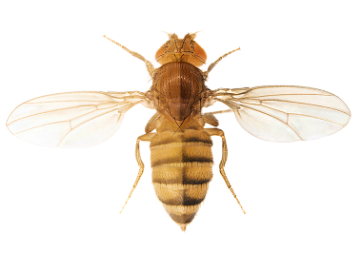Active Genetics / Gene Drive
Active genetics is a new CRISPR/Cas9 based method that greatly biases transmission of genetic traits, thereby bypassing traditional constraints of Mendelian inheritance. One application of this new technology is to create gene-drive systems for disseminating anti-malarial effector genes into mosquito populations.
|
The Mutagenic Chain Reaction (MCR)
On Dec. 18, 2014, females eclosed that had inherited a single copy of a genetic cassette consisting of Cas9 and a gRNA inserted at the precise site where the gRNA directed cleavage within the coding region of the recessive yellow locus. These initially heterozygous females displayed the homozygous mutant phenotype (i.e., were yellow). In the next generation the yellow females propagated their gene-converting trait to 97% of their offspring (Gantz and Bier, 2015). In analogy to the Polymerase Chain Reaction (PCR) which doubles DNA content in vitro in a test tube each denaturing cycle, we named this new amplifying genetic method the Mutagenic Chain Reaction (MCR) since it accomplishes a similar doubling of DNA content in vivo at each generation. This fundamentally novel ability to bypass the constraints of Mendelian inheritance, which we refer to as “active genetics”, has broad applications to gene-drive systems, genome engineering, and potentially to cell and gene therapy strategies (Gantz and Bier, 2016).
|
|
Gene-Drive Systems
We collaborated with the laboratory of Anthony (Tony) James at UCI to test an MCR construct in mosquitoes carrying Cas9, a gRNA, and an anti-malarial gene cassette that he and his colleagues had shown could block propagation of the malarial parasite Plasmodium falciparum by 100%. As observed in flies, this element propagated across four generations of the malarial vector Anopheles stephensi via males to 99.5% of progeny (Gantz et al., 2015). We are currently optimizing such systems to generate strains that can be tested in controlled field studies and are extending this approach to combating other vector borne diseases or invasive non-native pest species. In addition, we are designing and testing a variety of accessory active genetic elements including: 1) elements carrying only guide RNAs inserted at the genomic cleavage site which can either spread in concert with MCRs (CHACR elements) or can be combined with a trans-acting Mendelian source of Cas9 (CopyCat elements), 2) so-called reversal constructs that can either delete MCRs (ERACR elements) or inactivate them (e-CHACRs), 3) split MCR systems (trans-complementing MCRs) in which a CHACR-like element carries two gRNAs, one which directs cleave at its own integration site and the other at the integration site of the Cas9 transgene, 4) active genetic elements using other Cas9-like enzymes or modified forms of Cas9, and 5) testing active genetic elements in other organisms.
|
Large-Scale Genome Engineering
One important application of active genetics is to combine multiple active elements (e.g., CopyCat insertions) in half the number of generations that can be accomplished using traditional Mendelian inheritance. Such combinatorial assembly of elements could also include active propagation of point mutations. In addition, active genetic elements should be able to accelerate large scale genome engineering, which may have important applications to drug discovery (e.g., humanizing mice) and agriculture (aggregating multiple desired traits)
Bioethics and Social Engagement
Since active genetic elements such as gene-drives, in principle, could rapidly disperse through wild populations (hence their potential utility in combating vector borne diseases) it is also very important to communicate the science of this new field to the public and to other scientists. We therefore are very actively participating in a variety of such social engagement efforts including presentations to community forums and government regulatory bodies, conducting scientific workshops, and engaging in open discussions with the media.


